User-Friendly Math for Parents
User-Friendly Math for Parents
Learning and Understanding the Language of Numbers Is Key
Catheryne Draper

Published by Rowman & Littlefleld
A wholly owned subsidiary of The Rowman & Littlefleld Publishing Group, Inc. 4501 Forbes Boulevard, Suite 200, Lanham, Maryland 20706
www.rowman.com
Unit A, Whitacre Mews, 26-34 Stannary Street, London SE11 4AB
Copyright 2017 by Catheryne Draper
All rights reserved. No part of this book may be reproduced in any form or by any electronic or mechanical means, including information storage and retrieval systems, without written permission from the publisher, except by a reviewer who may quote passages in a review.
British Library Cataloguing in Publication Information Available
Library of Congress Cataloging-in-Publication Data
978-1-4758-3419-2 (cloth)
978-1-4758-3420-8 (paper)
978-1-4758-3421-5 (electronic)
 The paper used in this publication meets the minimum requirements of American National Standard for Information SciencesPermanence of Paper for Printed Library Materials, ANSI/ NISO Z39.48-1992.
The paper used in this publication meets the minimum requirements of American National Standard for Information SciencesPermanence of Paper for Printed Library Materials, ANSI/ NISO Z39.48-1992.
Printed in the United States of America

Contents
Keep in Mind
User-Friendly Math for Parents: Learning and Understanding the Language of Numbers Is Key is an attempt to give voice to those who have not deciphered numbers beyond the whole numbers used for counting. Like Winning the Math Homework Challenge, this book continues to tell the real stories about how children think as they learn the number language behind the mathematical processes. Numbers are the nouns in the language of mathematics, so understanding these nouns is essential for making sense of the rest of the language. If the nouns of math called numbers do not make sense, then the rest is meaningless.
Seeing mathematics through your childs eyes, and understanding why they may see it that way, is the purpose of User-Friendly Math for Parents. This book follows the imaginative and creative learning premise for learning math through visual strategies featured in Winning the Math Homework Challenge. As you read these childrens stories, be prepared to get excited about understanding your own feelings and similar experiences. Also, prepare to be challenged to understand childrens descriptions and explanations as seen through their eyes.
We dont know what we dont know. In this respect, adults are no different than young learners. Parents want to help their child understand. The parents who are Math Aficionados want their child to understand what is so very clear to them and have little clue about what is so confusing. Parents who are Math Avoiders want their child to know more than they themselves were able to learn. Both types of parents have an equal passion to help. The Math Avoider parents feel a kind of helplessness and ask the same question that Sawyer described, What good can come from the blind leading the blind? The child is caught in between.
My hope is that these stories can help you, the parent, see the numbers in mathematics through your childs eyes, both the clarity and the confusion. Armed with this new insight about numbers, you will be able to talk differently with your child about math as a new language. If you are a Math Avoider, you might recognize yourself in these stories. If you are a Math Aficionado, you might get a glimpse of the reasons behind your childs dilemma.
Visual-spatial children learn differently than auditory-sequential children, so many of the models and explanations in User-Friendly Math for Parents capitalize on the spatial strengths of these visual-spatial and visual-mechanical learners. Images and diagrams, overall Big Idea concepts, creative explanations by other children, organization, along with analogies and metaphors, are used in the examples and explanations instead of simply providing definitions and rules. These explanations hopefully reveal the mathematical thinking behind the rules.
The children featured in User-Friendly Math started their turnaround from failure to success when the visual models and materials started making the number relationships clearer to them. They moved the materials around, arranged, rearranged, and examined them from different perspectives. They asked questions about the relationships in the materials. As students tried out new arrangements, a subtle yet effective psychological shift happened. Their aversion to the math transferred from their core identity to the materials. The math relationships were now in the materials, where they should have been all along.
These children also started to take responsibility for their learning, slowly and tentatively at first, by risking some opinions and trying out some imaginative interpretations. Numbers ceased to be enigmatic; new and different numbers had new and different squiggle marks that represented different amounts and relationships. The children were beginning to feel like they may indeed have some control over their math learning! As their understanding improved, so did their math voice. Isnt that the real purpose behind learning?
C. D.
Tears at the kitchen table, tummy aches on test days, hundreds of dollars worth of tutoring... this may be the stuff math education is made of from a parents perspective. Parents who excelled in math wonder why the latest new method is necessary, grousing that the old way was good enough for me. Parents who struggled through math themselves, as I did, may relive their own school days and join their children in despair. Neither of these approaches is going to help the child laboring over math homework with a pencil in her hand and tears falling on her paper. I know because this was what happened in my house.
My third grader lay on the floor, crying in despair. What had driven my fun-loving, creative, intelligent son to this point? Yet another afternoon of practicing timed multiplication tests. With each tick of the oven timer, his anxiety had built until he ran from the kitchen table in genuine terror. I had honestly thought all he needed was more practice. Now he was so upset and exhausted that no more homework was going to get done that night. By trying to help my child, I had made everything worse.
Finding my son in the grip of math anxiety, I thought immediately of Catheryne Draper. I had met this remarkable math education wizard shortly after my son was born, and had successfully used ideas I had gleaned from her to keep him comfortable with numbers during early childhood. A couple of relocations and other distractions had allowed some of his math development to slip through the cracks, and now the whole house was reverberating with his woe. At that moment, I seriously wished I could pack my third grader up and move him to Cathys house for help. Thanks to the book you hold in your hands, you can do the next best thing: bring her wisdom and experience to your child yourself.
Drapers message is a welcome one to both those she calls Math Avoiders and the ones she dubs Math Aficionados. While this book concentrates on demystifying the language of math, the recurring theme in all her work is that there is more than one right way to attack and solve a math problem. Throughout these pages, she will show youwith illustrationsmultiple ways to get the concepts that are central to math success.
Using current research in educational psychology, her observations from over fifty years of math education, and anecdotes from her own students, Draper shows how kids think about numbers, and emphasizes the importance of really listening to your child. She demonstrates ways to help a child develop genuine number sense using objects you already have in your house or can make easily at home. Math experiments to try, games and exercises to use with your child, and a handful of challenging concepts are provided to help you and your child establish a dialogue about numbers and get you both more comfortable with math.
Next page
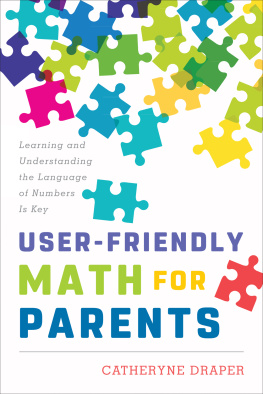

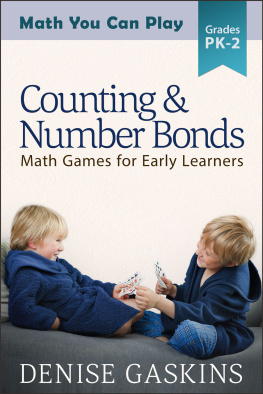
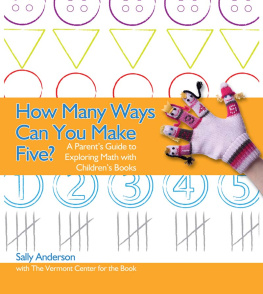


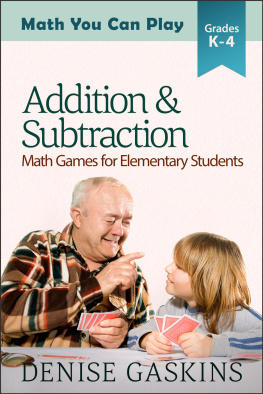
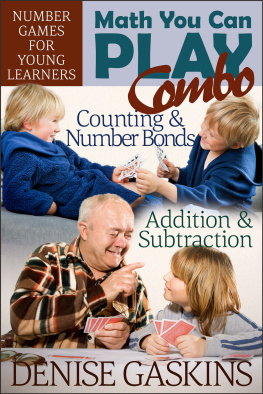
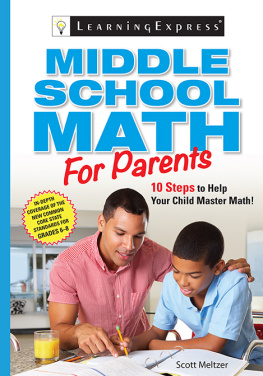



 The paper used in this publication meets the minimum requirements of American National Standard for Information SciencesPermanence of Paper for Printed Library Materials, ANSI/ NISO Z39.48-1992.
The paper used in this publication meets the minimum requirements of American National Standard for Information SciencesPermanence of Paper for Printed Library Materials, ANSI/ NISO Z39.48-1992.